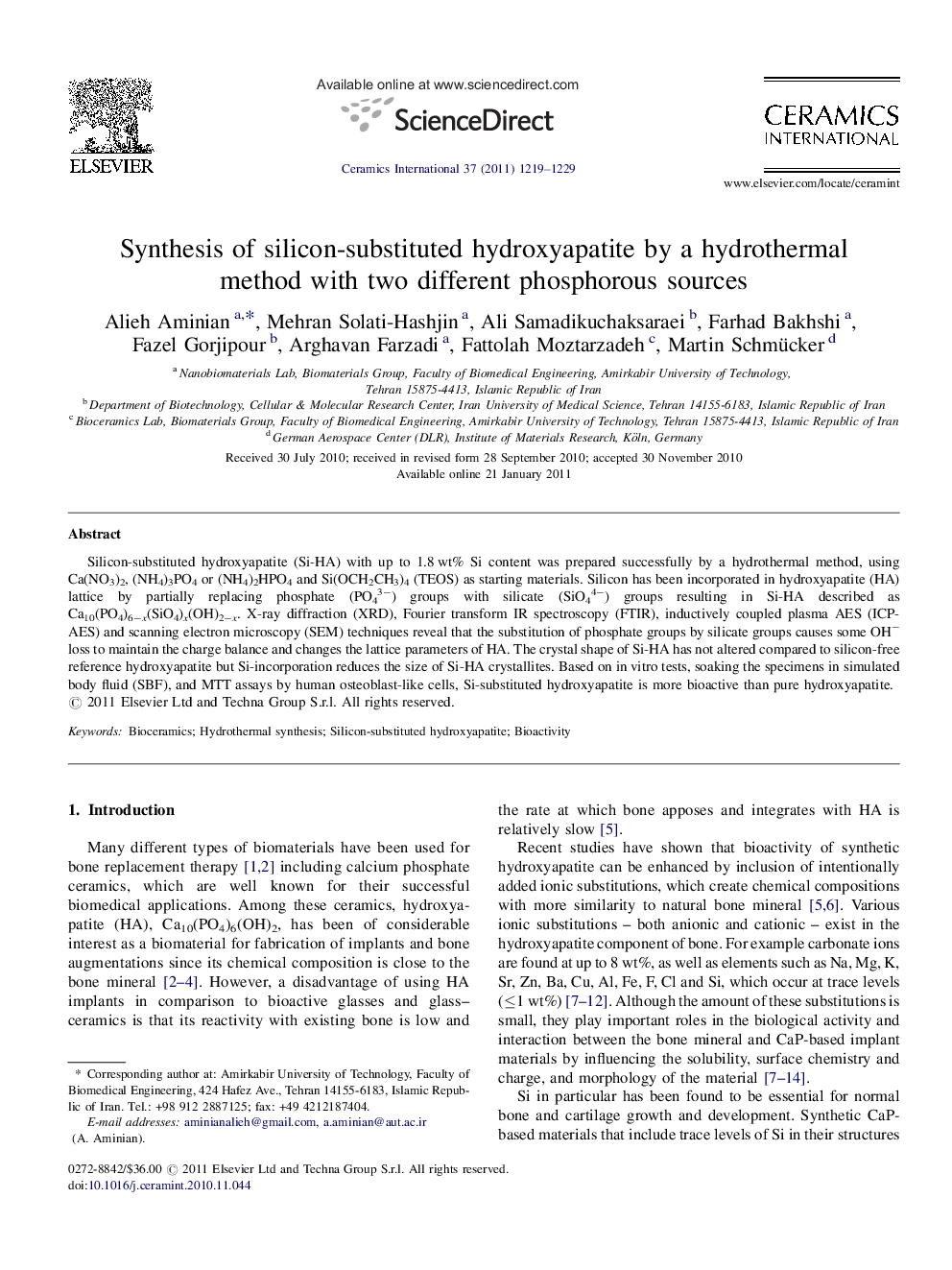| Article ID | Journal | Published Year | Pages | File Type |
|---|---|---|---|---|
| 10626360 | Ceramics International | 2011 | 11 Pages |
Abstract
Silicon-substituted hydroxyapatite (Si-HA) with up to 1.8Â wt% Si content was prepared successfully by a hydrothermal method, using Ca(NO3)2, (NH4)3PO4 or (NH4)2HPO4 and Si(OCH2CH3)4 (TEOS) as starting materials. Silicon has been incorporated in hydroxyapatite (HA) lattice by partially replacing phosphate (PO43â) groups with silicate (SiO44â) groups resulting in Si-HA described as Ca10(PO4)6âx(SiO4)x(OH)2âx. X-ray diffraction (XRD), Fourier transform IR spectroscopy (FTIR), inductively coupled plasma AES (ICP-AES) and scanning electron microscopy (SEM) techniques reveal that the substitution of phosphate groups by silicate groups causes some OHâ loss to maintain the charge balance and changes the lattice parameters of HA. The crystal shape of Si-HA has not altered compared to silicon-free reference hydroxyapatite but Si-incorporation reduces the size of Si-HA crystallites. Based on in vitro tests, soaking the specimens in simulated body fluid (SBF), and MTT assays by human osteoblast-like cells, Si-substituted hydroxyapatite is more bioactive than pure hydroxyapatite.
Related Topics
Physical Sciences and Engineering
Materials Science
Ceramics and Composites
Authors
Alieh Aminian, Mehran Solati-Hashjin, Ali Samadikuchaksaraei, Farhad Bakhshi, Fazel Gorjipour, Arghavan Farzadi, Fattolah Moztarzadeh, Martin Schmücker,
